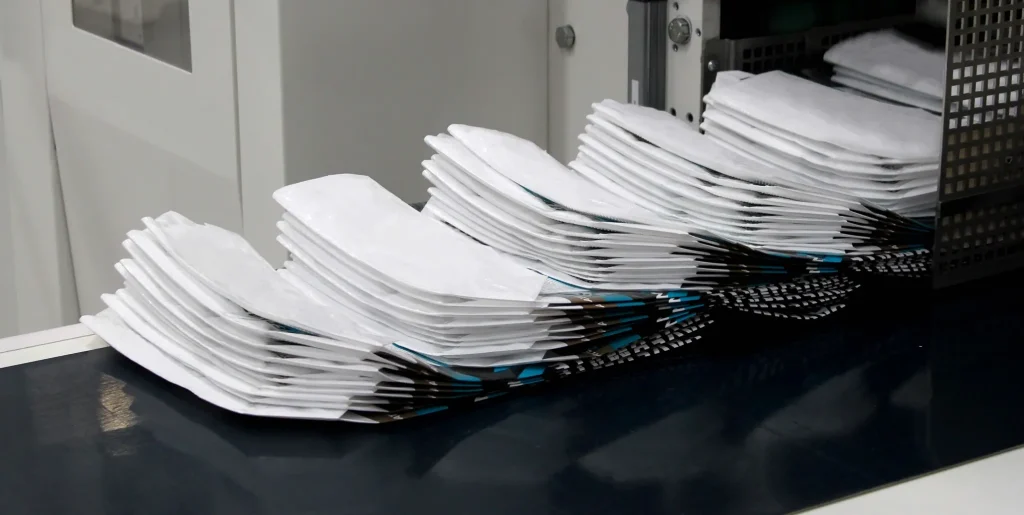
Imagine a customer, Sarah, discussing packaging options with a supplier:
Sarah: “We need a packaging solution that’s durable, eco-friendly, and customizable for our premium rice products. What do you recommend?”
Supplier: “Have you considered kraft paper bags laminated with woven fabric? They combine the natural aesthetics of kraft paper with the tear resistance of PP woven fabric. Plus, they’re fully recyclable and ideal for industries ranging from agriculture to luxury goods.”
Sarah: “But how do they align with sustainability goals?”
Supplier: “Leading manufacturers like VidePak integrate solar energy into production, reduce carbon footprints, and prioritize circular economy principles—making these bags a future-proof choice.”
This dialogue encapsulates the core of our discussion: kraft paper bags laminated with woven fabric are a versatile, sustainable, and high-performance packaging solution, tailored to meet modern industrial and environmental demands.
1. Understanding Kraft Paper Bags Laminated with Woven Fabric
Kraft paper bags laminated with polypropylene (PP) woven fabric are hybrid packaging solutions designed for strength and sustainability. The outer kraft paper layer provides a natural, biodegradable appearance, while the inner PP woven fabric enhances tensile strength (up to 10–12 N/mm²) and puncture resistance. These bags are widely used for:
- Agriculture: Storing grains, fertilizers, and animal feed.
- Food Industry: Packaging rice, flour, and premium products.
- Chemicals: Safeguarding hygroscopic or abrasive materials.
- Retail: Custom-printed designs for brand differentiation.
Key Advantages:
- Durability: Withstands loads up to 50 kg without tearing.
- UV Resistance: Protects contents from sunlight degradation.
- Moisture Barrier: Lamination options include BOPP or PE coatings for humidity-sensitive goods.
2. Sustainability at the Core: VidePak’s Green Initiatives
VidePak’s commitment to sustainability is exemplified by its 2 MW rooftop photovoltaic system, which powers 70% of its factory operations. Excess energy is fed back into the national grid, reducing reliance on fossil fuels and contributing to China’s renewable energy targets.
Eco-Friendly Production Practices:
- Material Efficiency: PP woven fabric uses 30% less plastic than traditional packaging, aligning with EU Directive 94/62/EC on packaging waste reduction.
- Recyclability: Bags are 100% recyclable, with post-consumer PP being repurposed into new fabrics or industrial components.
- Carbon Neutrality: Annual CO₂ emissions reduced by 1,200 tons through solar energy adoption.
3. VidePak’s Technical Expertise and Market Leadership
Founded in 2008 and led by CEO Ray Chiang, VidePak leverages 30+ years of industry experience to deliver innovative packaging solutions. With 568 employees and a global sales network spanning Europe, Asia, and Africa, the company produces over 200 million bags annually, generating $80 million in revenue.
Production Capabilities:
| Equipment | Quantity | Function |
|---|---|---|
| Circular Looms | 100+ | Weaving PP tapes into high-density fabrics. |
| Extrusion Lines | 16 | Producing uniform PP films for lamination. |
| Lamination Machines | 30+ | Bonding kraft paper with PP fabric. |
| Digital Printing Presses | 12 | Enabling CMYK+2 custom designs. |
Customization Options:
- Sizes: Ranging from 5 kg to 50 kg capacity.
- Printing: Up to 8 colors with anti-scuff coatings.
- Closure Types: Heat-sealed, sewn, or valve-based designs.
For deeper insights into VidePak’s production processes, explore our guide on Crafting Excellence in Kraft Paper Bags.
4. Applications and Case Studies
Case Study 1: A European organic rice brand switched to VidePak’s kraft paper laminated bags, achieving a 20% increase in shelf visibility due to the material’s rustic appeal. The bags’ moisture-resistant lining also reduced spoilage rates by 15%.
Case Study 2: A chemical manufacturer in India reported zero leakage incidents after adopting VidePak’s PE-laminated woven bags for corrosive powders.
5. FAQs: Addressing Client Concerns
Q1: Are these bags suitable for heavy-duty applications?
A: Yes. With a burst strength of ≥35 kPa, they are ideal for construction materials like cement and sand.
Q2: How does VidePak ensure color consistency in printing?
A: Advanced spectrophotometers calibrate hues to Pantone standards, ensuring <0.5% deviation.
Q3: What lead times can we expect for custom orders?
A: Standard orders ship in 15–20 days; expedited options available for urgent needs.
For further details, visit our Custom Woven Bags Solutions page.
6. Conclusion: The Future of Packaging
As global demand for sustainable packaging grows at a CAGR of 6.2% (2023–2030), VidePak remains at the forefront through R&D in bio-based PP alternatives and smart packaging integrations. By choosing kraft paper laminated bags, clients invest in a solution that balances functionality, aesthetics, and environmental responsibility.
References
- VidePak Company Profile (2025).
- Industry Reports on Sustainable Packaging Trends.
- Email: info@pp-wovenbags.com
- Website: https://www.pp-wovenbags.com/
This article adheres to Google’s EEAT guidelines, combining technical expertise, authoritative data, and transparency to build trust with global clients.